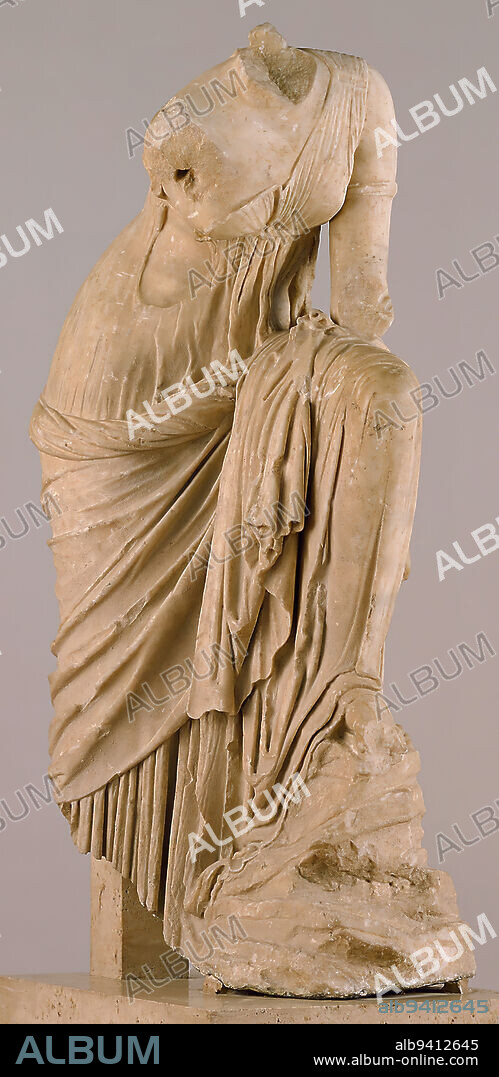alb9412645
The Tiber Muse, 2nd-1st century BCE, 47 x 13 x 24 in. (119.38 x 33.02 x 60.96 cm), Marble, Italy, 2nd-1st century BCE, Although discovered in the vicinity of the Tiber river in Rome in 1885, the style of this statue's drapery suggests that it originated in a workshop in Greece or Asia Minor. The Roman importation and copying of Greek sculpture are well documented, from the time of the Roman conquests of Greeks territories in the third century B.C. and throughout the imperial era (27 B.C.-about 395 A.D.). The public exhibition of Greek spoils encouraged Romans to collect Greek art and commission new works in similar styles. Displaying statuary of Greek origin or appearance eventually became a mark of one's social status and education.

|
Add to another lightbox |
|
Add to another lightbox |



Caption:
The Tiber Muse, 2nd-1st century BCE, 47 x 13 x 24 in. (119.38 x 33.02 x 60.96 cm), Marble, Italy, 2nd-1st century BCE, Although discovered in the vicinity of the Tiber river in Rome in 1885, the style of this statue's drapery suggests that it originated in a workshop in Greece or Asia Minor. The Roman importation and copying of Greek sculpture are well documented, from the time of the Roman conquests of Greeks territories in the third century B.C. and throughout the imperial era (27 B.C.-about 395 A.D.). The public exhibition of Greek spoils encouraged Romans to collect Greek art and commission new works in similar styles. Displaying statuary of Greek origin or appearance eventually became a mark of one's social status and education.
Credit:
Album / quintlox
Releases:
Model: No - Property: No
Rights questions?
Rights questions?
Image size:
1778 x 3648 px | 18.6 MB
Print size:
15.1 x 30.9 cm | 5.9 x 12.2 in (300 dpi)
Keywords:
1885 • 27 B. C.-395 A. D • 2ND-1ST CENTURY BCE • APPEARANCE EVENTUALLY • ASIA MINOR • ATELIER • BRAND (PRODUCT) • BRAND • CLASS • COLLECT GREEK ART • COMMISSION NEW WORKS • COPYING • COURSE • DISCOVERED • DISPLAYING STATUARY • EDUCATING • EDUCATION • EPOCA IMPERIAL • GREECE • GREEK ORIGIN • GREEK SCULPTURE • GREEK SPOILS ENCOURAGED ROMANS • GREEKS TERRITORIES • IMPERIAL AGE • IMPERIAL ERA • INSTRUCTING • INSTRUCTION • ITALIA • ITALY • LESSON (SCHOOL) • LESSON • MARBLE • MARBRE • MARK (CURRENCY) • MARK • MARROW • ORIGINATED • PEDAGOGY • PERIOD • PUBLIC EXHIBITION • RIVER TIBER • ROMAN CONQUESTS • ROMAN IMPORTATION • ROME • S SOCIAL STATUS • STAMP • STATUE'S DRAPERY • STUDENT • STYLE • STYLES • TEACHING • TEACHING, EDUCATION • THIRD CENTURY B. C • TIBER MUSE • TIBER RIVER • TIBER • TIME • TRAINING • TRANSCRIBING • VICINITY • WELL DOCUMENTED • WORKSHOP
 Pinterest
Pinterest Twitter
Twitter Facebook
Facebook Copy link
Copy link Email
Email

